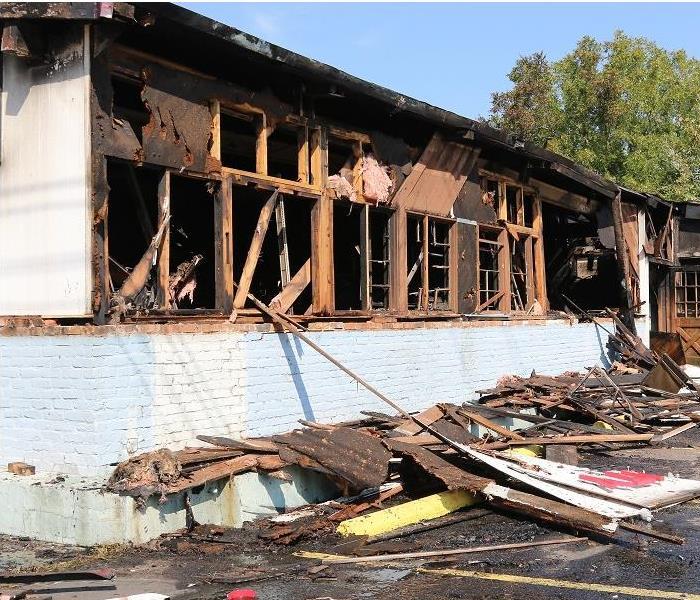What Happens During Fire and Smoke Damage Cleanup?
7/25/2022 (Permalink)
Experiencing a fire at your commercial building in Salt Lake City, UT, can be devastating. What's next? Are you going to have to be out of service for a while? Even the results of a small fire can be costly in terms of replacing lost property, being out of business during the restoration process and restoring whatever can be salvaged. Several types of loss can result from a fire, including charring, soot, and smoke damage. Specific basic steps must be taken to mitigate the amount of loss, clean, and restore the commercial property.
Fire, Smoke and Soot Damage Cleanup Process
Once the flames are extinguished, it's time to begin work to return your building to its pre-fire state. Usually, the best option is to hire fire damage restoration professionals to be confident that your building and salvageable property are thoroughly cleaned, restored and inspected. These experts will typically take the following steps.
1. Assess the Damage
Experts need to perform a thorough assessment of the damage before getting to work. Evaluating the loss will help the professionals determine the best methods to restore the property. From this assessment, they will create a remediation plan based on the type and extent of the loss.
2. Mitigate the Damage
One of the most crucial parts of the process is to mitigate the damage as much as possible. To prevent further loss, technicians often shut off the electricity to the affected area or the entire building and shut off the water main. It may also include roof tarping and boarding up windows and doors until structural repairs can be completed.
3. Create a Remediation Plan
After the loss is under control, the professionals will create a plan to best remediate the water, fire, soot and smoke damage. You will probably see the technicians wearing personal protective gear during the process. This PPE will keep them safe and also help prevent cross-contamination of possible harmful substances. Depending on how long the moisture has been left from extinguishing the flames, mold spores could already grow into mold, creating and spreading more mold spores. These spores can easily be transferred into other parts of the building. The restoration professionals know how to take the safety precautions necessary to prevent this.
4. Cleanup
Restoration technicians use their expertise and professional equipment to clean everything in the affected area as much as possible. This will include removing charred and other unsalvageable materials and cleaning dust, debris and soot from all surfaces. It will also involve smoke cleaning from various materials.
5. Perform Restoration Work
After removing all unsalvageable materials from the area and thoroughly cleaning all surfaces, the technicians will continue working to restore the property to its pre-fire condition. This work will include using air scrubbers to clean the air, using different methods to eliminate smoke odors and rebuilding parts of the structure. It may also include industrial drying techniques because water damage occurs after a fire is extinguished.
Hopefully, you will never encounter a fire at your workplace. However, knowing what to expect if flames break out is helpful. Include the information for your preferred restoration company to have on hand so fire and smoke damage cleanup can begin as quickly as possible. It is also essential to create a fire plan for your employees.





 24/7 Emergency Service
24/7 Emergency Service
